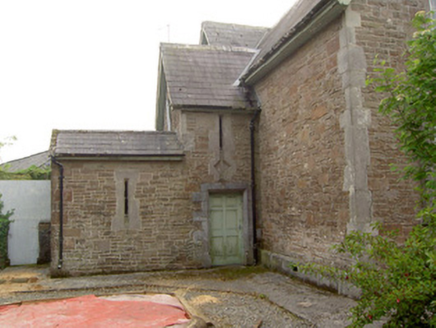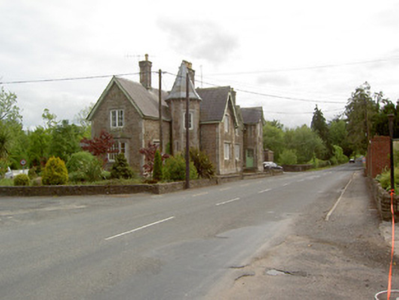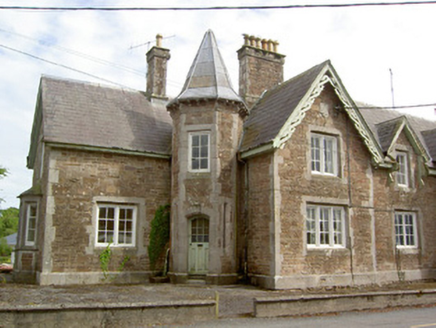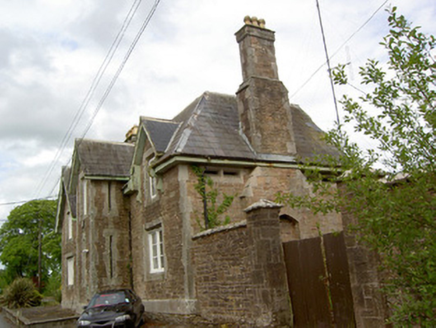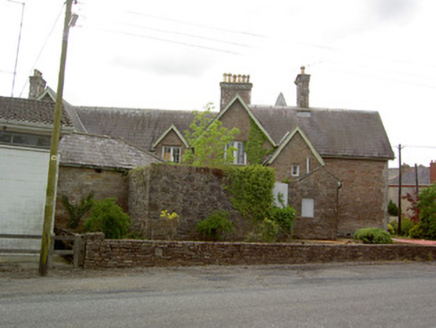Survey Data
Reg No
22102004
Rating
Regional
Categories of Special Interest
Architectural, Historical, Social
Previous Name
Dundrum Constabulary Barrack
Original Use
Garda station/constabulary barracks
Date
1860 - 1870
Coordinates
196684, 145155
Date Recorded
26/05/2005
Date Updated
--/--/--
Description
Detached Tudor Revival style multiple-bay two-storey former constabulary barracks on irregular plan, built c.1865, having two asymmetrical gable-fronted projections and octagonal entrance tower to front façade, three asymmetrical gable-fronted projections to rear. Now disused. Pitched slate roofs and cast-iron rainwater goods having roughly-dressed sandstone chimneystacks with cut limestone quoins and having decoratively-carved timber bargeboard to larger projecting gable. Sprocketed octagonal pyramid slate roof to tower with carved console brackets to eaves. Snecked sandstone walls with cut limestone quoins and plinth, having decorative blank plaque to larger projecting gable. Square-headed window openings with chamfered cut limestone block-and-start surrounds and fixed six-pane timber casement windows, variously appearing singly, in pairs and in triplets. Square-headed chamfered loops with cut limestone block-and-start surrounds and fixed timber framed one-over-one pane windows to tower and rear projections. Loop over rear door has blind lozenge shot hole. Segmental-headed door opening to entrance tower and flat-headed to rear projection, with chamfered cut limestone surrounds, having half-glazed timber panelled door to front and timber panelled door to rear. Outbuildings with hipped slate roof and snecked limestone walls, and pump, to rear. Snecked limestone walls and piers to rear yard. Gravel and landscaped areas with coursed rubble sandstone walls, having some concrete block replacement, to site.
Appraisal
This attractive building is a legacy of the Maude family, principal landowners in the area, who oversaw its construction in the mid-nineteenth century. This building, with fine detailing such as decorative timber bargeboards and elegant hexagonal tower, retains its original character and is a good example of the Tudor Revival style popular at the time.
